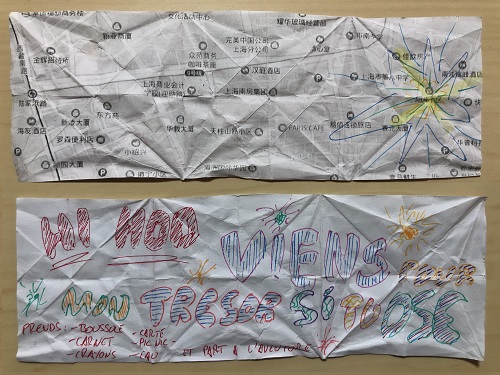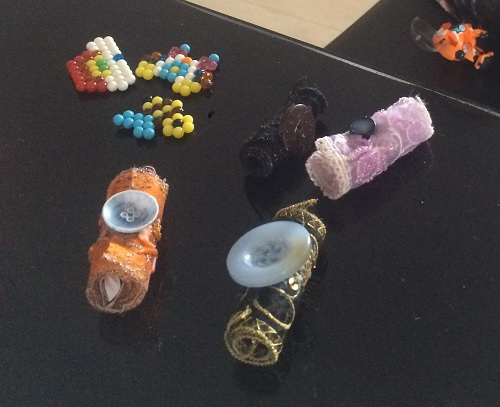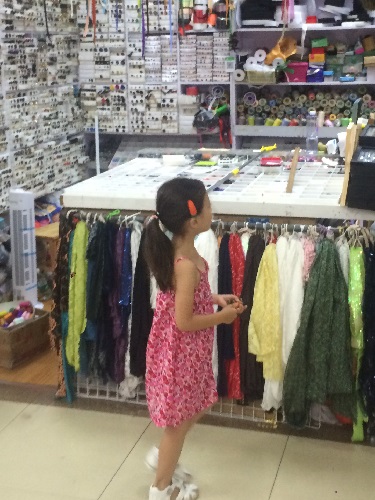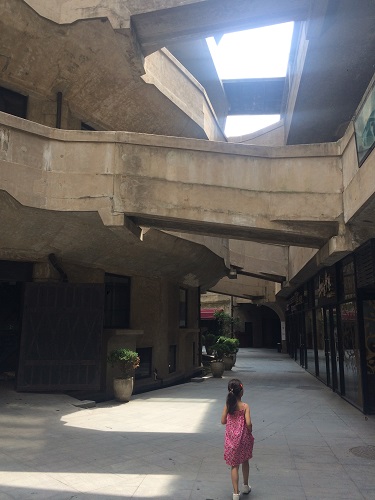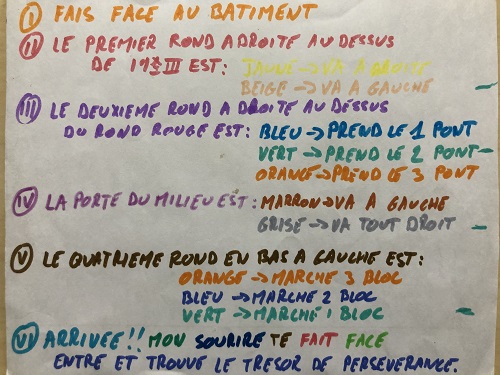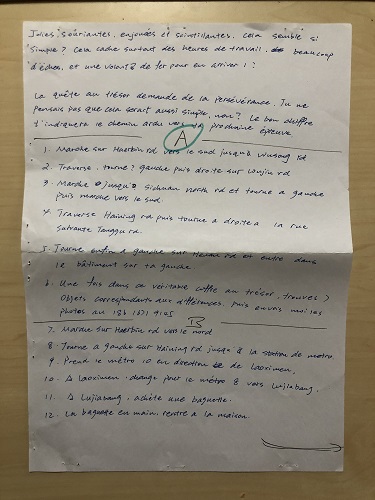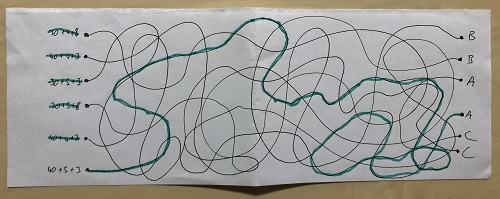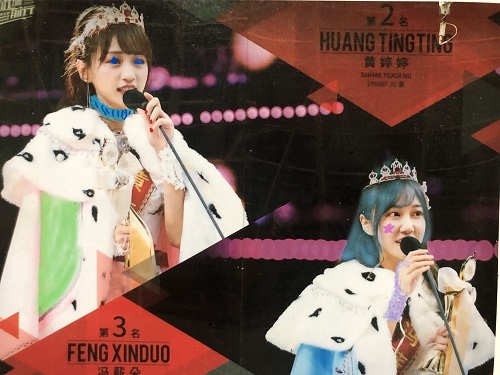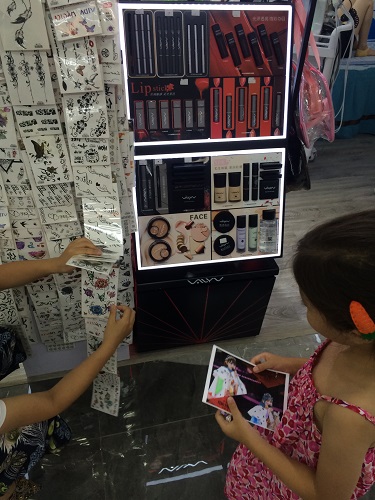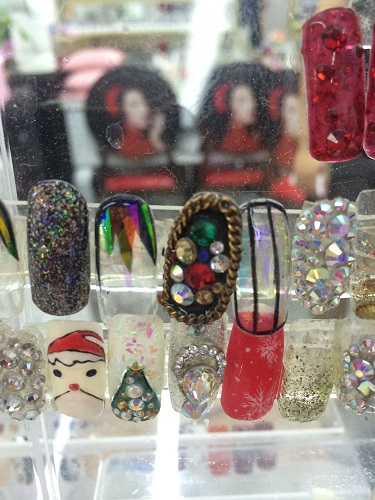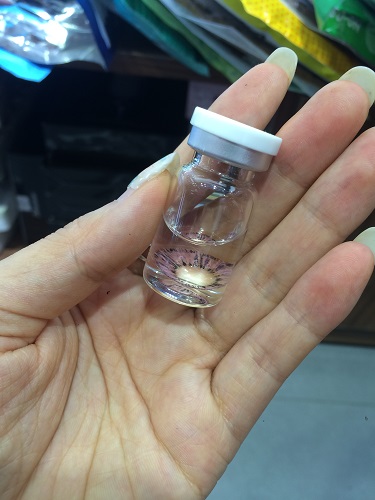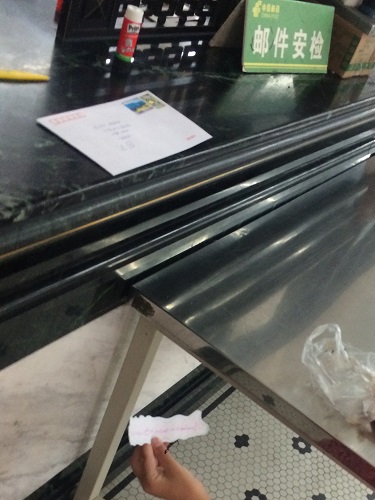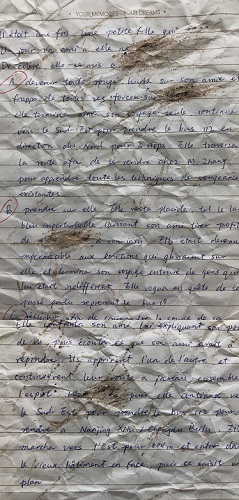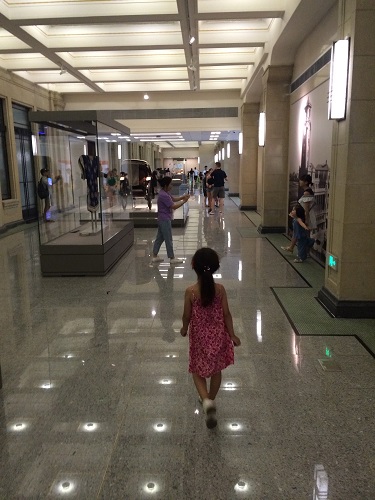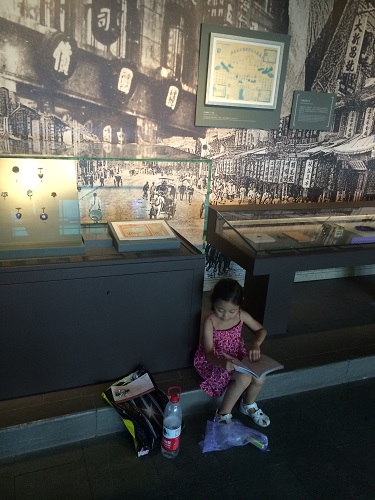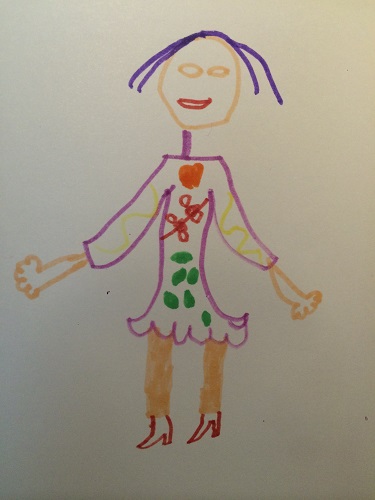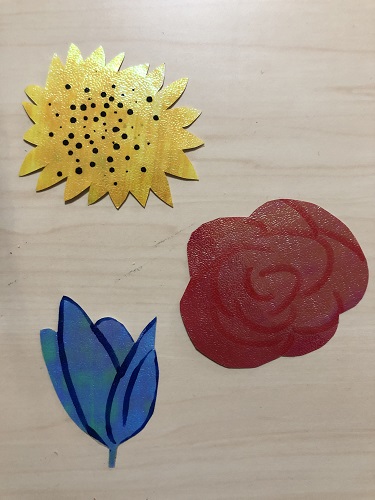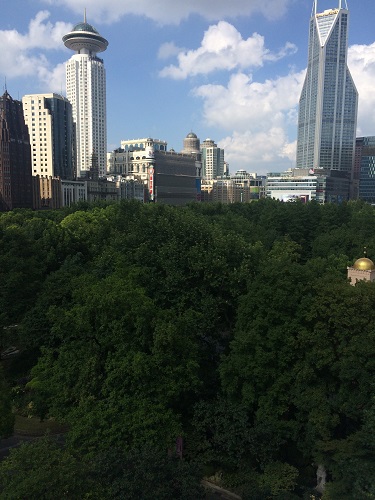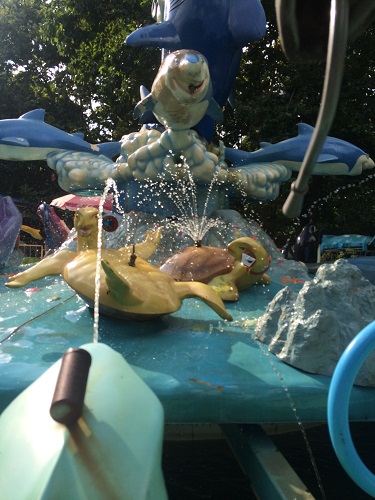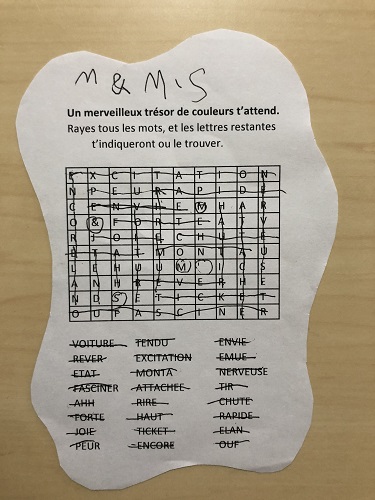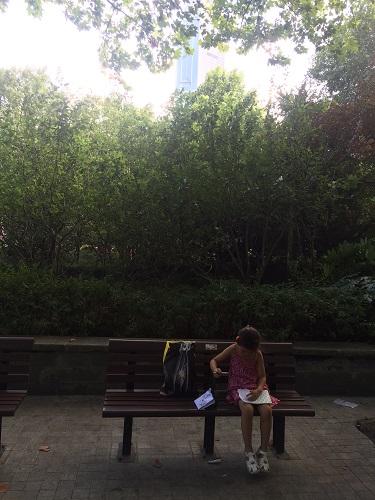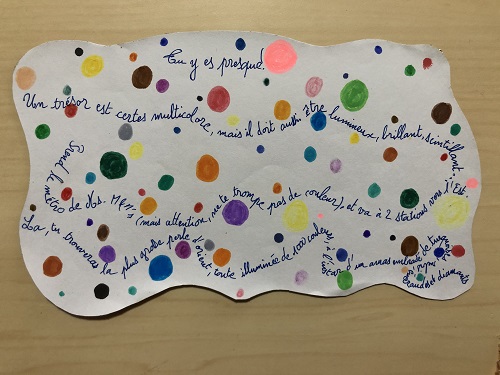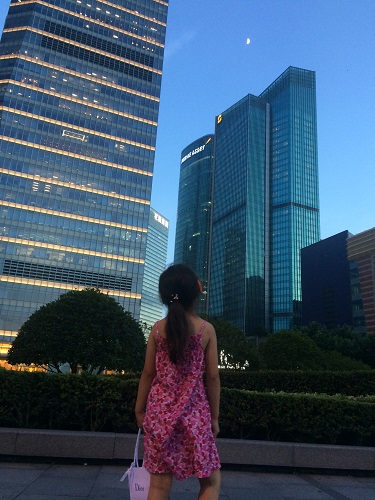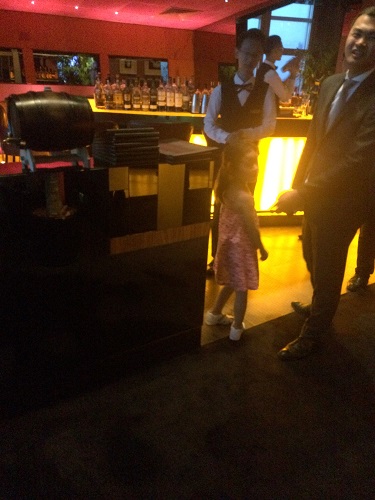Creative and fun Treasure Hunt: a guidebook!
Our little girl J. (7 years old) has been wandering around Effy’s workshop since… forever. As sunny days are on us, let’s follow our serie of article to keep our little ones engaged, creative and busy.
What is the best way to spend a day if not outside under the sun, discovering the world around? Nothing better to motivate than a Treasure Hunt, it’s fun, exciting, and enchanting. What more? There’s no age to start creating and organizing a treasure hunt.
Alike our previous card extension and song making, this activity helps to develop creativity & autonomy in a very fun way. In a nutshell:
- age: easy but need mobility (4~5 yo+)
- adult support: required during the hunt itself
- time: simple short treasure hunt can be planned and created in a day, longer one can take up to a week to set up
- material: drawing material to prepare hints
Step 1: Delimit the treasure hunt.
Before anything else, define the limits of your treasure hunt as this will delimit the work to be done. A quick checklist:
- Who is it for? (number of people, age, any special needs). This will help define how simple/complicate hints will have to be.
- Who will host? Someone or several persons will need to create and host (secretly or not) the hunt. Make sure these people won’t spoil the fun for other people, but having your little one prepare the hunt is always a lot of fun.
- Where? Locations can have specific characteristics. Indoor, outdoor, city, countryside, dry, wet, all these locations will have different characteristics that could help build up the theme of the hunt and hints to create.
- When & for how long? Time is very important and often the most complicate element to plan as it is not always easy to guess right how long will people take to discover and answer clues. So clarify ahead when you plan to do the treasure hunt, and for how long. Consider daylight available, weather constraints depending on the season, food breaks for lunch or snack for longer hunts, transportation time constraints (don’t miss the last bus back…), etc.
For example, below were frames made for…:
… kid’s 1st treasure hunt.
- For Jasmine (6 years old girl)
- Me
- Shanghai city (before confinement)
- Full day, from 9 am to 6 pm, early fall
… kid’s mum (kid’s 1st hosting a treasure hunt).
- For the mum
- Jasmine and I
- Shanghai city (after confinement)
- Full day, from 9 am to 6 pm, early spring
Step 2: Map out the hunt
Once the hunt framework has been define, time to map out the hunt. On a table, draft or let your kid provide basic elements or points you absolutely want to do. Start drafting by putting the starting point and the finishing treasure revelation moment. Then, insert must-do milestones in between, like a specific landmark, or a place to eat, a place for kids to play, all depending on your hunt constraints define before.
At this point, don’t overcrowd the plan just yet, and start filling-in indications between points, noting down the mean of transportation and time needed to move from one point to another. This will give you an early plan, a bit like this (using case 1):
| Place | Time to reach |
| Home | |
| Silk market | 10 min |
| 1933 art building | 30 min |
| Jade Buddha temple | 30 min |
| Shanghai History Museum | 30 min |
| M&M’s Nanjing Rd Shop | 10 min |
| Pearl tower | 15 min |
Now refine, allowing more or less time, and inserting nearby stops depending on your schedule. Always keep some margins (you never know how fast people will get your clues), limit long boring transportation time or prepare a side activity to make sure they won’t bore players.
Case 1:
| Place | Time in | Time out | Transportation |
| Home | N/A | 10.00 | Bus 43 |
| Silk market | 10.15 | 10.40 | Bus 55 |
| 1933 art building | 11.20 | 11.40 | Walk |
| SNH48 dream theatre | 11.50 | 12.00 | Metro 10 or walk |
| Qipu street | 12.15 | 12.40 | Walk |
| Post office museum | 12.50 | 13.20 | Bus 19 |
| Jade Buddha temple | 14.00 | 14.40 | Bus 112 (9 stops) |
| Shanghai History Museum | 15.15 | 16.15 | Walk |
| Miss Dior Exhibition | 16.15 | 16.35 | Walk |
| People’s park | 16.40 | 17.00 | Walk |
| M&M’s Nanjing Rd Shop | 17.15 | 17.30 | Metro 2 |
| Pearl tower | 17.50 | 18.00 | Walk |
| Park Hyatt top floor bar | 18.20 | 18.50 | Metro 9 |
For this case, I made sure to add enough walking stops to better control time and planned a “late” lunch to take plac inside the bus for the longest trip (between 13.20 <-> 14.00). I also add 5 min at each step as margin. I also included steps that I know my daughter would be excited about (the M&M’s shop, People’s park kids park, the dream theatre) while including stops she would otherwise not want to go but that would open her perspectives (Shanghai History and post museum, Jade Buddha temple, 1933 art building).
Case 2:
| Place | Time in | Time out | Transportation |
| Home | N/A | 10.00 | Walk |
| Lujiabang Subway station | 10.10 | 10.20 | Metro 8 |
| Orient sport center | 10.45 | 11.10 | Metro 11 |
| Disney Subway station | 11.40 | 11.50 | Walk |
| Disney lake | 11.50 | 14.00 | Walk |
| Disney store | 14.10 | 14.30 | Disney bus |
| Disney kids’ playground | 14.45 | 16.15 | Disney bus |
| Disney Subway station | 16.30 | 16.40 | Metro 11 |
| Oil tanks museum | 17.20 | 18.00 |
For this case, J. obvisouly wanted to get to Disney district and the oil tank riverside where she usually plays with her friends. So, as we knew she would want to play around, J. and I agreed to keep a light planning, including a picnic around the lake. The treasure hunt was targeting her mother, which would obvisouly guess very quickly that the hunt was made by J., so the mystery factor was downplayed, targeting a family day out.
Step 3: Find the hunting theme!
With a clear map in hand, it’s time to define your theme. You can base on the locations you are visiting, or players’ center of interest to make sure they’ll keep being engaged.
Once you have a theme in mind, it’s time to work on your story and the resulting treasure. Make sure that the story and treasure are appealing enough for players to go through the quest without giving up.
From the theme, also list all the things you can use to make clues and hints.
Case 1: A mystery fairy made two paper swan, promising a “treasure”. Enough to excite the imagination.
Case 2: Pirates. Evil pirates would still Legos and leave a mystery map instead, forcing J.’s mum to help her retrieve the missing Lego.
Step 4: Create the perfect clues!
Only now should be time to think about your clues. Clues should be:
- Easy to find, and to answer for players.
- Clear. Make sure the right answer will be clear enough for players to know what to do or where to go next without a doubt. Always ask yourself: with this message, would I do / go to the next point. Could that indicate something else?
- In line with the story and the theme, both visually and in spirit.
- Varied. Use different approach. Games, riddles, crosswords, etc. It will keep players curious and eager to find the next clue.
- Fun! Your kid activity book is a very good source of idea to invent easy games.
Now, time to create. Again, if your kid is to host, the little one should participate in crafting clues. To keep mystery alive however, do mix up the writing. For example, you can ask your colleague / friend, to help you write down the text on some clues, just so that handwriting won’t be recognizable. Also take advantage of new technologies to standardize clues.
To keep things secret, beware of the place where you’re hiding your work-in-progress, just keep them in the Christmas gift hiding place.
Examples available in chapter 6.
Step 5: Prepare for the big day.
Plan the treasure hunt revelation flashy to impress and get excitment high from the start. Pack your clues, water, umbrella, and off you go. Keep in mind, not everything will go as plan, so keep flexible and be imaginative.
Step 6: Hunt for fun!
Let the fun begin! Below was the case 1 full treasure hunt with a step by step experience:
Stop 0 => Home / Departure
Folded swans welcomed J., with mysterious words, a map, a list of items to bag, along with four rolls of cloth locked with a button in wax.
To our own surprise, J. was so amazed that she deeply believed that a fairy came through the window at night. We had to comfort her enough so that she agreed to get out treasure hunting. Her worries only fade away once we got through the second stop…
Stop 1 => Silk Market
J. had to find the exact same button to “magically” release cloth rolls (which I secretely anytime after she found a similar button). Each cloth rolls had a piece of paper hinting at the next step and the mean to get there.
Unfortunately, J. was unable to recognize the 1933 building, so we asked merchants, which was a fun addition to the plan.
I bought her a shiny button too, which I knew would keep her busy in down time all day long.
Stop 2 => 1933 Old Slaughterhouse
J. found her way to the 1933 old millfun, and while visiting one of the narrow corridors, I hid the next clue down a pillar. She saw it immediately while passing back. It was a game about colour and the peculiar architecture of the facade to find the right path to the next stop. Despite her hating counting, she counted as never before to get the right answer.
Stop 3 => SNH48 Star Dream Theatre
Again, I walked behind J. inside the theatre, and drop the next clue on a ticket machine nearby the entrance. She eventually found it while I pretended to look on the other side of the room.
Clue were a math formula to solve in order to find the next stop; together with a 7 differences type of game, where J. had to identify the 7 differences between the clue and a poster outside.
Unfortunately, they changed the poster the week before, so the clue was different. Eventually she saw 7 “weird” thing on the clue, and I comfort her opinion that these must have been the differences…
Stop 4 => Qipu Street Clothing Wholesale market
We walk to the Qipu commercial streets for the next task, which was to find the “7 differences” (eyes, hairs, tattoes, dress, nails, necklace, bracelets), take picture, and text them to the fairy number (which was J.’s mum).
Upon, reception, she sent a picture of the next clue (a map) + a text asking J. to write and send real letters to her grandparents to receive the next clue.
Stop 5 => Shanghai old post office & museum
J. found her directions to the old Shanghai post office. While she admired the collection of old golden stamps, I discussed with the postman and asked him to give J. the ext clue when J. will inquire for long distance stamps. The clerk found the demand extremely odd at first, but agreed. Twenty minutes later, J. finished the letter she wrote for her grandparents, and she was in awe when the postman gave her the clue along with the stamps…
Stop 6 => Jade Buddha temple
Before hoping in the bus, we bought a quick lunch, which occupied J. during the 35 minutes ride. Inside the temple, I made a paper ball of the next clue and dropped it on the floor in front of the Jade Buddha. The clue was a story. Some words were missing, and J. had to guess the ending to get to the next stop.
Stop 7 => Shanghai History Museum
For the next clue, I actually had a leaflet from the museum and wrote on it some weeks before. When we got in, I simply put it on the shelves for J. to pick it up. The leaflet (which is now part of Kwoa collection) indicated a specific place to go in the museum and a task to do. The task was to draw a qipao from ancient Shanghai and send a picture to the fairy’s number. I remembered wrong while preparing clues, and I indicated the wrong floor, but it went all fine without J. realizing the mistake. J. played with the virtual qipao game and draw her own qipao. We send the text and went on the roof waiting for the fairy (her mother’s number) response.
Stop 8 => Miss Dior exhibition
The reply came as planned, stating that next clues where in J.’s pockets. The text also asked “what is Miss Dior favorite flower?”. The sad thing was that her mum had J. wear a dress without pocket that day, so I had to “discover” the next clues (three flowers) in my own pocket… The three flowers had a text behind indicating the next stop, so J. had to figure out which was Miss Dior’s favorite flower to move on. From the History museum roof, she saw one of the many advertisement in People’s park for Miss Dior exhibition so we went down and walked there. Inside, she quickly solved the mystery and chose “Rose” as the answer. As indicated behind the rose, we walked to the People’s park kid’s playground to look for a roller coaster.
Stop 9 => People’s park kids playground
That day, the coaster was closed for maintenance. We switched, and while buying ticket for the water shooting game, I pretended that the staff gave me the next clue. J. believed me, and after a round, we sat on a bench to solve the crosswords. As she started reading, it was a good exercice for her, but maybe a bit too hard. Besides, there was a lot of mosquitos that day, so I ended up strongly “helping” her. We finished the crosswords and the answer were M&M’s which was one of J.’s favorite shop on nearby Nanjing Road.
Stop 10 => Nanjing Road M&M’s shop
We were early on the schedule, so I slowed things down and let her play at the Lego shop first. M&M’s shop was the last stop before the grand finale which was supposed to be the Oriental Pearl at night (a big illuminated and shiny pearl). Despite slowing things down she discovered the last clue I hid behind cups. She solved the riddle and guessed that we had to ride line 2 of subway for two stops to the Pearl.
Stop 11 => The Oriental Pearl (daytime), replaced by Shangri-La top floor bar
The Pearl was still dark when we arrived, so the hunt became “improvised” at this point. I “imagined” a text from the fairy, asking J. to think about the treasure she cherished the most (temple wisdom, history wisdom, beauty, payground joy emotions, 1933 architecture aesthetism, SNH48 perseverance, Qipu market bling, and so on). The fairy also advised to elevate her mind, and I told J. that I knew a place nearby to get in the sky, the ParkHyatt bar. As we walked there, the bridge was blocked by what seem to be LangLang shooting propaganda for the communist party 70th anniversary, so we went to the Shangri-La bar instead. Since J. is underaged, we just went inside, argue with bartender to take a few pictures, and waste enough time for night to arrive.
Stop 12 => The Oriental Pearl (at night)
The idea was for J. to realize on her own that she missed her mum after such a long day out, and answer the Fairy as such. She never got there on her own, but hey, not everything can work… So after some heavy “suggestions” from my side, she eventually sent a video to the fairy under the Pearl stating she “loved her family”. And we never heard from the fairy since… We went back home to meet mum for dinner.
Up this day, almost a year after, J. still wonders who was that fairy.
For more Kid’s creative activity, just sign-up to Kwoa’s newsletter! Hopefully this idea will keep your little ones occupied for some time, while helping them to express their creativity! We would love to receive your treasure hunts, so do not hesitate to leave a message or contact Effy & Kwoa ([email protected]).

